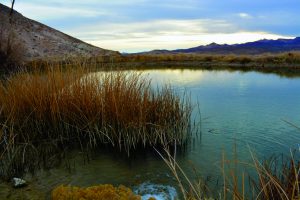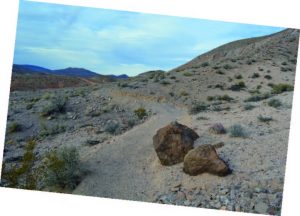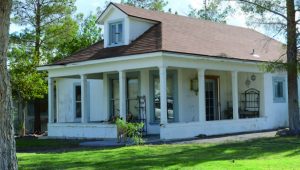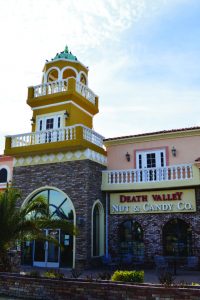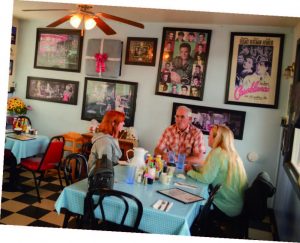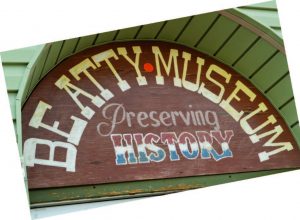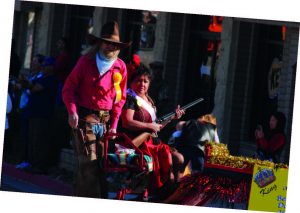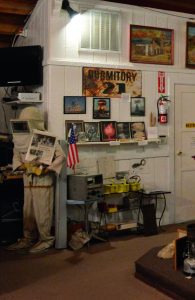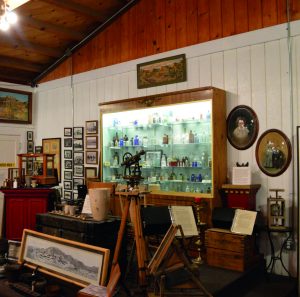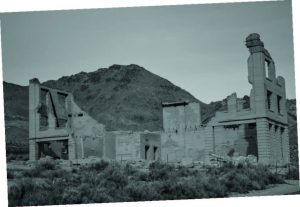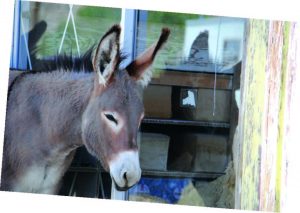Beatty Beckons
March – April 2016
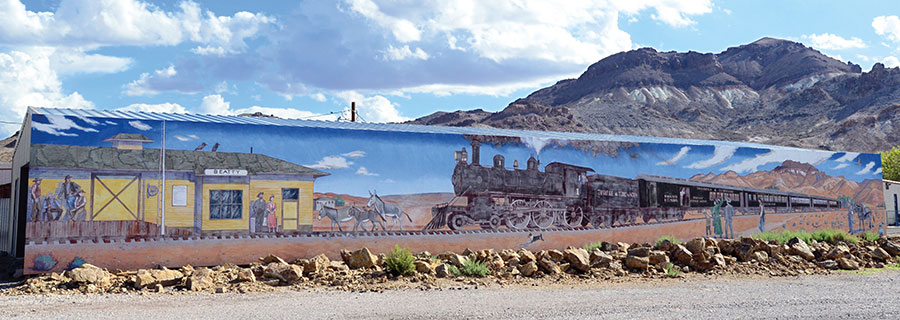
A gateway of possibilities looms in the southern Nevada town.
BY MEGG MUELLER
One of the definitions of gateway is a means of access or entry to a place. A way to pass from one area into another, basically, and while the town of Beatty has rightfully positioned itself as “The Gateway to Death Valley” I prefer to think of Beatty as a gateway to an unexpected adventure in its own right.
While it is true that any visit to Death Valley should begin in Beatty, what is equally true is that it should include at least one night in this most rustic Nevada town. Unfettered by false glamour and pretense, Beatty is a destination for anyone looking to peer deep into the soul of small town Nevada: what you find might not always dazzle but it will always leave you feeling enriched. And who knows? You might even discover a thing or two when you stop and look around.
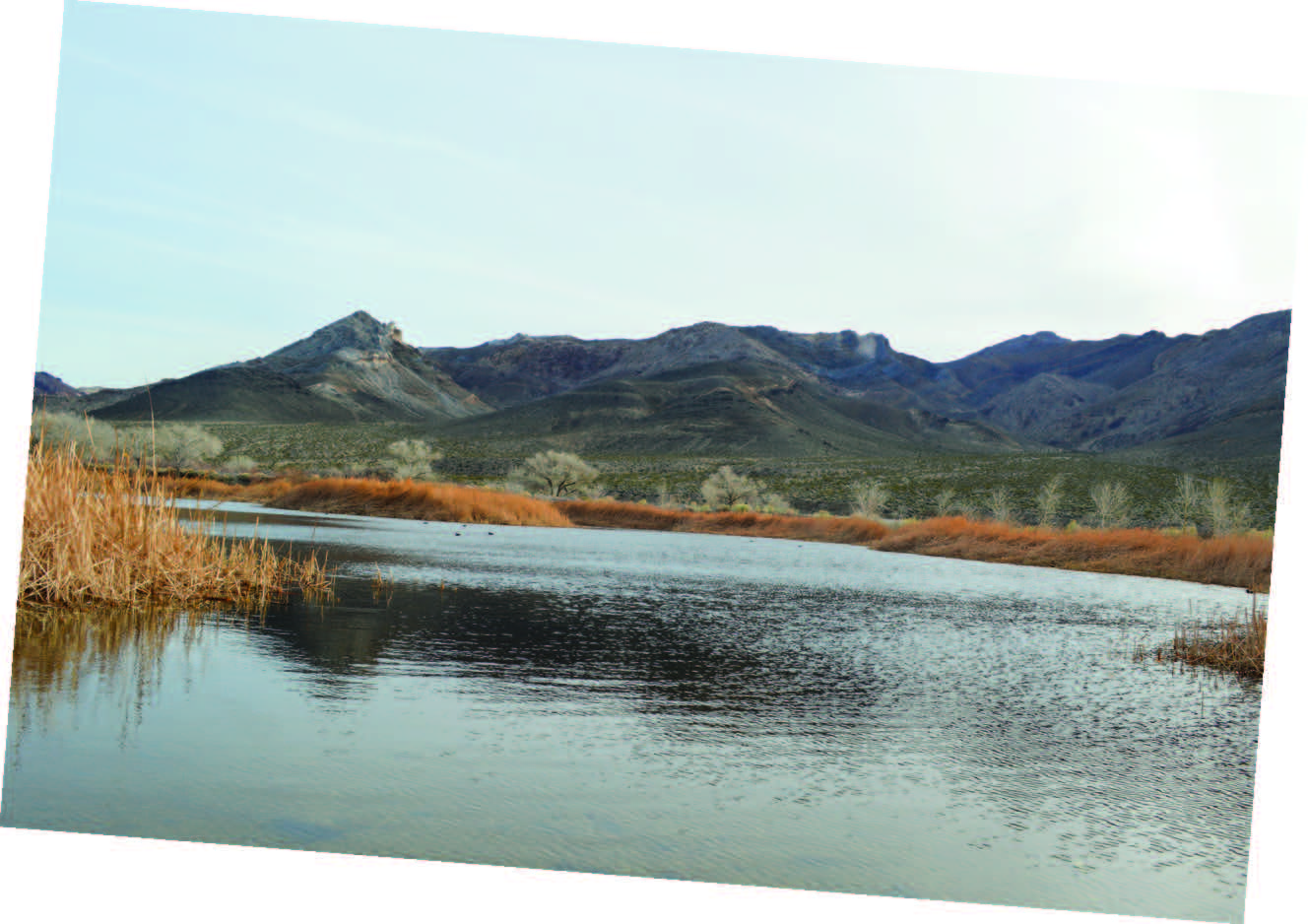
BACK IN THE DAY
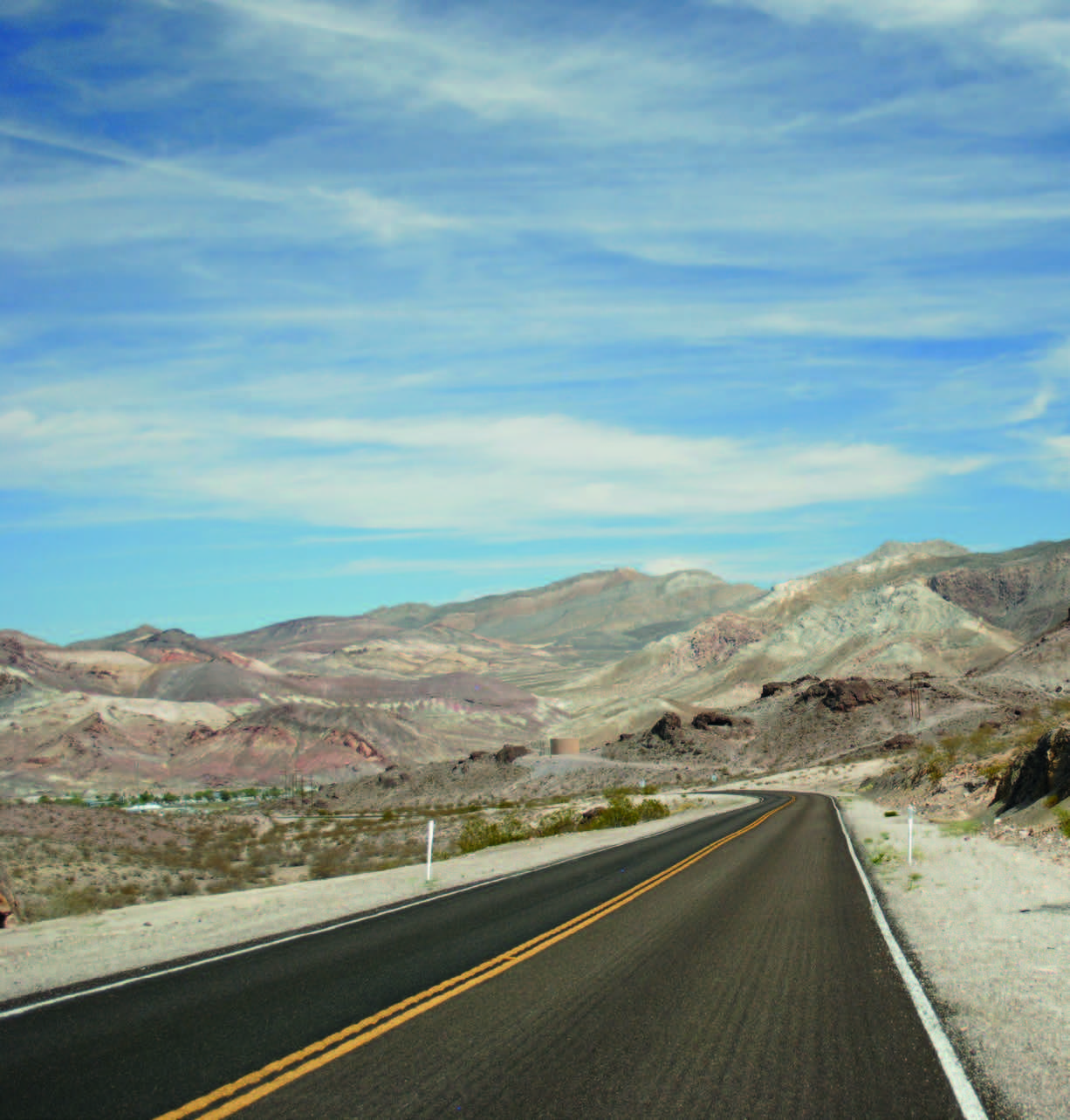
While Nevada is no stranger to remote towns, Beatty’s stoic isolation is considerate: south to Pahrump it’s almost 75 miles; north to Tonopah is 93; and the drive to Las Vegas will cost you 117 miles. While just 13 miles to the California-Nevada border, once inside the Golden State, all you’ll find for seemingly forever is Death Valley. It’s a wonderful place to visit, but take my advice and remember from whence you came; you’ll want to go back there soon.
Beatty sprang to life in 1904 from the nearby gold discoveries, but it was a plentiful supply of water that kept Beatty alive, long after towns such as Bullfrog and Rhyolite disappeared into the dust. Some 30 years before gold was found, Montillius Beatty had settled in the Oasis Valley to ranch with his Paiute wife, and to occasionally work his claims. As miners poured into Bullfrog and Rhyolite, Beatty became a supply station and the Tonopah and Tidewater Railroad came to town in 1906, followed shortly by the Bullfrog Goldfield Railroad. As people, hotels, and restaurants arrived, Beatty began calling itself the “Chicago of the West.”
For a town that’s never really had more than about 1,000 residents and didn’t get power until the 1940s, Beatty is unlikely to be confused with Chicago. Despite a short-lived resurgence from 1988 to 1998 when mining returned to the area, Beatty has held on through its boom and frightening bust years, and is once again searching for an economic driver that will not only keep tourists in town, but will actually entice them to visit on its own merit.
ON THE VERGE OF DISCOVERY
David Spicer and Karl Olsen believe there’s still gold in the hills surrounding Beatty, only this time it’s not a finite mineral. Trails are the future, if these two have anything to say about it.
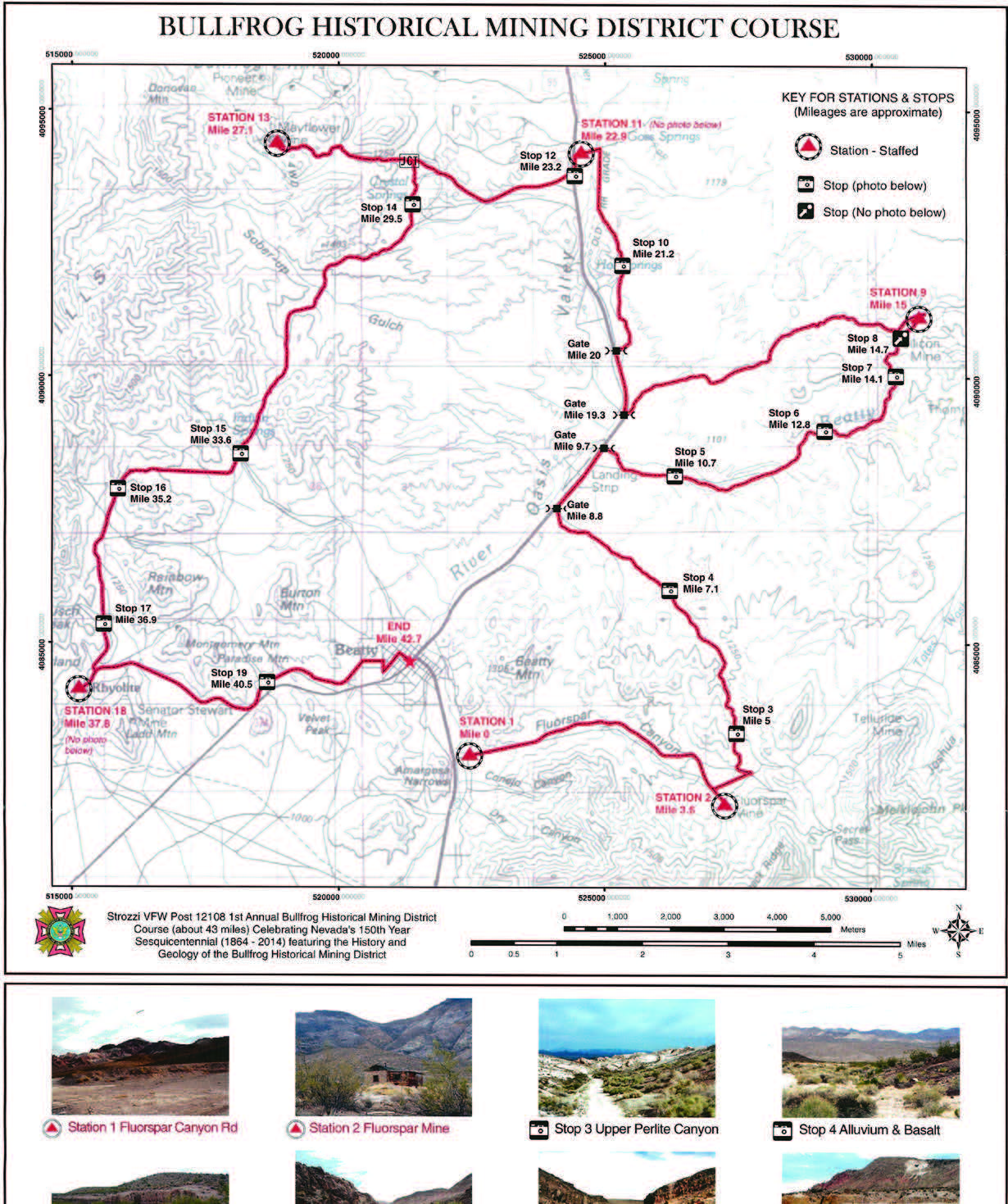
Karl is the Bureau of Land Management’s caretaker at the Rhyolite ghost town, four miles outside of Beatty (see story on Rhyolite, 66). Karl is also a former Marine, and when he heard the Strozzi Veterans of Foreign Wars’ (VFW) building in Beatty needed renovation, he created the Bullfrog Historical Mining District Course and poker run to help raise funds. The ATV course was about 43 miles its first two years, and for this October’s event Karl has added a new segment which will increase the course to 100 miles. What sets this poker run apart is the map and accompanying course guide participants receive; each stop on the course is clearly marked—many with photos—and the guide delves into the history and geology of the area in excellent detail, thanks to author Genne Nelson.
The combination of off-road adventure, history, and geological tour is unmatched and has doubled in size since the first year, bringing more than 120 vehicles to town in 2015.
Karl says he’s included mining sites, railroad history, some of the area springs, and even petroglyphs, although he’s a little hesitant to reveal some of the area’s fascinating features. Years of witnessing the vandalism that often occurs in Rhyolite have made him cautious.
“You have to be careful what you tell people about,” he says. “You just don’t know what they are going to do.”
BULLISH ON THE FUTURE
David Spicer, meanwhile, is working toward his goal of creating a mountain bike mecca in the hills of the Oasis Valley, and a proposed four mile, gentle trail from Beatty to Rhyolite on the old railroad bed could connect David and Karl’s passions.
David took to riding a mountain bike instead of driving his truck after being stomped into the mud in 2000 by a 2,600-pound bull on his ranch northeast of Beatty. Driving his truck was too jarring on his back, but that unfortunate accident turned out to be a blessing in disguise.
“Honestly, I’m better for my injuries,” David says. “I started riding, and I’ve never stopped.”
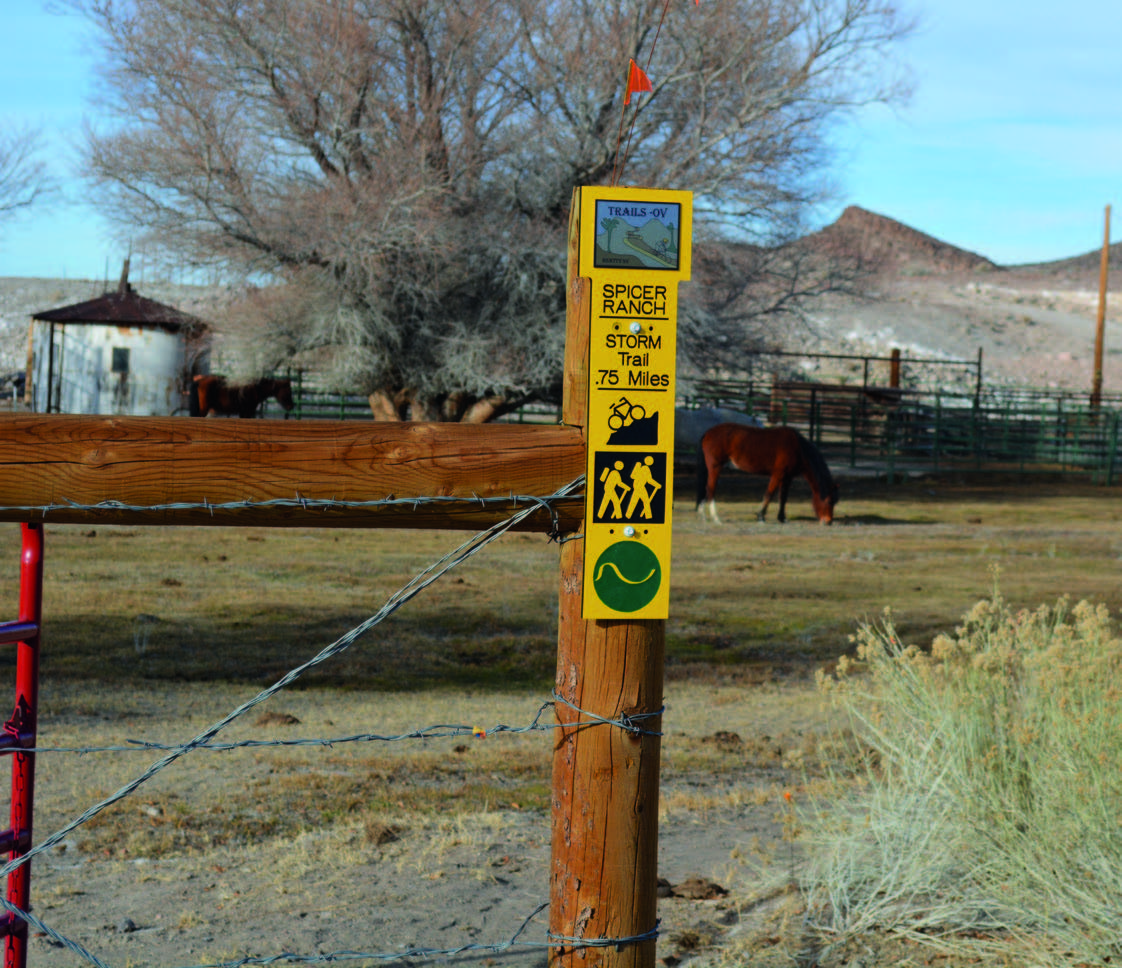
That’s an understatement; along with running the 320-acre ranch his parents bought in the early ’60s, he has a decorative landscape business that uses rocks from his own quarries, plus mining business partnerships, and more. David is also creating miles of public non-motorized-use trails on his property. He and his crew hand-built 7 miles of flowing, clean trails in just three months. From his property, they link to numerous natural animal trails in the surrounding area, and his ultimate goal is hundreds of miles of hiking, mountain biking, and equestrian bliss.
Born in Beatty, David has seen the area’s ebb and flow firsthand. To him, it’s a matter of reinvention.
“In small towns, you can’t just focus on one career,” David explains. “You have to be flexible.”
That flexibility is responsible for not just the multi-use trails, but also the full-fledged events park and recreation facility that is happening at Spicer Ranch. There’s 40 acres of graded parking, an information kiosk with trail maps, camping area, and showers due to be completed in mid March. Remember: this is all located on a working ranch where you can see the day-to-day action, which adds to the only-in-Nevada experience. For David, it’s just the beginning of things to come. He’s already hosted two Tough Mudder events on the ranch, but decided against hosting another.
“They had about 7,200 people come for the event,” he says. “It was great, both years, but I decided to focus on smaller events, like the Boy Scouts Mountain Man Rendezvous which is about 2,000 scouts.”
HEART AND SOUL
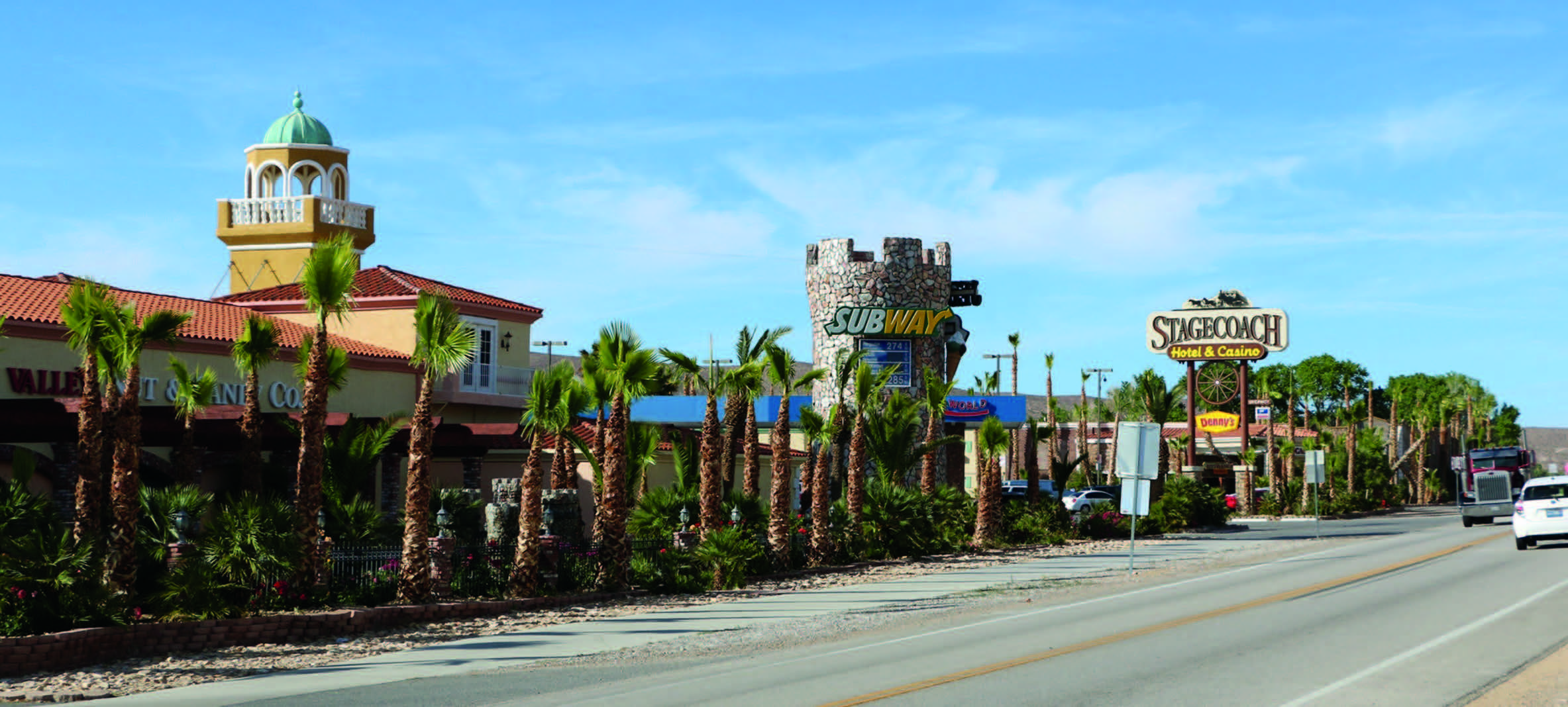
Small is big when it comes to selling the town of Beatty, according to some current residents.
“We’re looking to bring people to town,” David says. “People who want to live in a small town, people who want to raise their families, and grow here.”
Linda Shirley came to Beatty about 3 years ago. Her husband, Rob, was retiring and wanted to find a small town that he could help with his skillset. Linda works for the Beatty Chamber of Commerce, and Rob is the town’s water manager, and while Linda comes from Miami the charms of Beatty haven’t been lost on her. “If you move here, you’ll know everyone in three weeks,” she says. “No one is ever alone on the holidays. People here take care of one another.”
That care is the heart of what people like Karl, David, and Linda hope will spread through the community into its tourism infrastructure. Without it, the incredible trails, scenery, history, and area attractions can’t hope to bring the needed visitors. David notes that without an infusion of the requisite specialty coffee shops, brewpubs, and shopping opportunities, many tourists will still consider Beatty just a gateway.
THINGS YOU NEVER KNEW ABOUT BEATTY
There are more than 350 hotel rooms in Beatty and ample places to eat, not to mention the usual bars and saloons that have enough character and ambiance to satiate even the most adventurous partier. On that note: bring some cash. While ATMs are easy to find, some businesses don’t take credit cards. But don’t blame them; there is no bank in Beatty. There is however, a gem of a museum. Amina Anderson is the granddaughter of Claudia Reidhead—co-founder of the Beatty Museum and Historical Society—and the museum’s manager. On an informal tour of some of the musuem’s collections, she tells how in 1995, her grandmother and two other women—Vonnie Gray and Mary Revert—started the museum in a small house next to her grandmother’s home in an effort to preserve the history and culture of Beatty that was threatening to be lost.
Fast forward 11 years, and what you’ll find is a spectacular collection of photographs from young Rhyolite and Beatty, materials from the Nevada Test Site, military displays, and many other exhibits. And while the museum is an awesome representation of the area’s history, it’s so much more. The museum receives donations from area families, and the collections are not germane to just Beatty; it’s more of a visual history of the people who live there. There’s a collection of straight razors, which Amina has artfully displayed along with a clever display of five men who died while using such razors. Touches like this bring the artifacts to life, and create a thoroughly enjoyable experience.
Another discovery is Bailey’s Hot Springs, just outside of town. Temperatures of the springs range from 98 to 105 degrees, and there’s an RV park, picnic area, and even buffalo on the property. Bet you didn’t expect that.
Aside from the myriad trails in the surrounding hills, one of the most startling facts about Beatty is the natural water supply, thanks to the Amargosa River and the number of springs—Vanderbilt Springs and Bombo’s Pond, Species Springs, and Little Indian Springs, specifically—in the area. Bird watching, wildlife viewing (including Beatty’s famed burros), and catch-and-release fishing are just a few of the delights you may not expect to find in a region so intimately associated with unforgiving deserts. Bet you didn’t expect that, either.
The Beatty Museum and Historical Center is free to visit, and is adding 1,200 square feet of space this summer to house its growing collection. The famous burros of Beatty are found in the surrounding hills and often roaming downtown. The annual Beatty Days celebration is the last Friday in October, and features a classic car show, Dutch oven cooking, chili cook off, music, contests, and even a pet parade.
The gateway to Death Valley, while again geographically appropriate, doesn’t begin to scratch the surface of Beatty’s attraction. The town is just 1 square mile in size, and while it does not yet have a shimmery feel to its amenities, it does offer the unique trait of being a very real town that does not trade on its rough and tumble existence. Trendy is not a word you’ll find in Beatty, but authentic is. Take time to discover it as it’s on the verge of becoming so much more than many expected.

